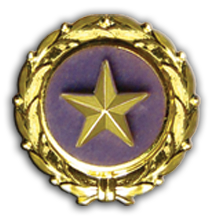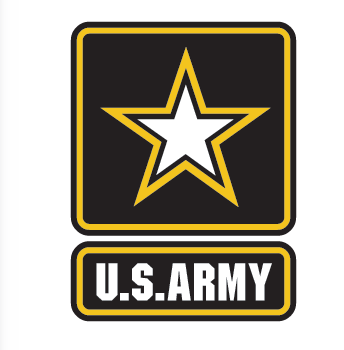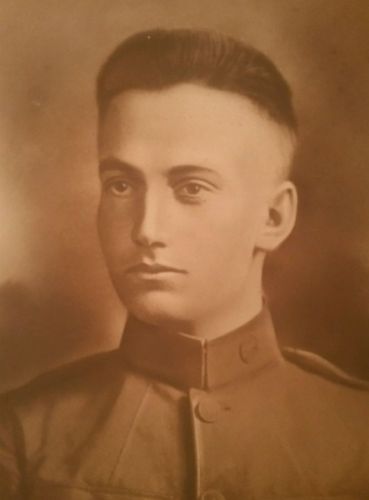












On November 13, 1918, Corporal Charles M. Cooper died of wounds while in the AEF in northern France. He had been fighting on the Meuse-Argonne battlefield near the village of Chehery, west of the Meuse River and only 7 or 8 kilometers from the city of Sedan. His wounding occurred four days before the Armistice ending the World War. It was later reported that Charles was in the forefront of a charge on enemy lines when he was hit by machine gun fire. He was 24 years old and was a member of K Company, 28th Infantry Regiment, 1st Division, American Expeditionary Force in Europe.
Charles Morton Cooper was the son of Charles Ernest and Julia L. (Unterbrink) Cooper. Born on March 24, 1894, Charles made his home on the family farm with brother August and sister Margaret on the Springfield Road about one mile north of the present unincorporated town of Midway, Madison County, Illinois.
Charles attended school through 8th grade nearby at the Yorkville School in Moro Township. After graduation from 8th grade, Charles attended the Bunker Hill Military Academy for two years (Bunker Hill, Illinois). He then helped with the work on his parents’ farm.
After his induction into the Army in Edwardsville in February 1918, Charles Cooper was assigned for training to the 335th Infantry of the 84th Division. The 335th Infantry left the United States on September 3, 1918, and arrived in Liverpool, England, on September 16, 1918. After crossing to Le Havre, France, the 335th was transported to the Argonne Front in northeast France, where replacements were needed for the units in the field. On October 20, 1918, Cpl. Cooper was one of 10 corporals, 4 sergeants, and many privates who volunteered for duty, and he joined K Company, 28th Infantry Regiment of the U.S. 1st Division.
What was to be the final assault of the Allies' Meuse-Argonne offensive began November 1, with the 1st Division in reserve of the 2nd and 89th Divisions near the small strategic hill town of Barricourt. The objective of this attack was to push north to the city of Sedan to gain control of a four-track railroad line strategically vital to the German Imperial Army’s occupation of northern France. By the second day of the attack, the Americans' movement against the Germans had become an onslaught that the Germans could not contain. By November 3, troops were being rushed forward in motor trucks in pursuit of the demoralized Germans. Fighting moved fast over an open terrain of low hills and small villages, with the advance soon covering 20 kilometers.
On the afternoon of November 5, the 1st Division was ordered out of reserve to relieve the 80th Division on the front lines west of the villages of Beaumont and Letanne. The Division began a hard march at 4:00pm and traveled all night, soaking wet and on roads that had been churned into mud quagmires. The Division arrived at their line of departure at 4:00am.
The 1st Division command had no reconnaissance of the 80th Division. Nonetheless, the 1st Division got into position and started their assault before daybreak on November 6, at 5:30am. The towns of Yoncq and parts of Mouzon were taken by 1st Division units before orders were changed at about noon. The Division was ordered to march the next day on the prize itself, Sedan. These orders to enter Sedan came from the top – U.S. General John J. Pershing.
A new plan was then devised, to approach Sedan in five columns. The regiments were assembled by dark that evening for this re-directed attack, and each column’s advance commenced between 7:00pm and 8:00pm. The ensuing night march was once again rain-soaked over dark muddy roads, and the men’s condition declined physically and mentally with each hour. Progress was slow in the darkness. In the streets of the towns, there was fighting at close quarters. Columns forced their way through and left detachments to mop up. At every turn, the enemy was surprised by the appearance of the Americans during that night.
By 7:40am on November 7, the 28th Infantry had advanced an estimated 12 to 16 kilometers to the area around the town of Chehery. Near there, the 28th Infantry accidently strayed into dug-in troops of the U.S. 42d Division, resulting in friendly fire casualties. Doughboys shot at each other in the darkness, and a 1st Division patrol arrested a strolling Brigadier General Douglas MacArthur of the 42nd Division as a German spy.
After passing Chehery, the 28th’s 3rd Battalion, including Corporal Cooper’s Company K, deployed and advanced to attack Hill 297. The troops were continually under fire from enemy machine guns in two woods ahead, the Bois la Queue and Bois de la Marfee.
In the 3rd Battalion attack that morning, Corporal Charles Cooper was wounded in action. Charles started for a dressing station but never made it. None of the squad he was leading returned from the attack.
Four days later, on November 11, the terms of an armistice were agreed and the fighting ended.
Charles Morton Cooper died, by U.S. official W.W.1 burial records, (as revised), on November 13, 1918, rather than on November 7 as is recorded on his U.S. World War Veterans tombstone in the Cooper-Sanner Cemetery in Moro, Illinois. Corporal Cooper had survived for 6 days after his wounding on the battlefield.
Charles M. Cooper was buried in Letanne Cemetery, Department of Ardennes, France.
In 1921, the body of Charles M. Cooper was repatriated to the United States in accord with the wishes of his parents. On April 5, 1921, a funeral was held at the home of the parents in Moro Township, where the body laid in state and a service was conducted by two local ministers and a speaker. An estimated seven hundred people attended the service. Charles M. Cooper was buried in the Cooper-Sanner Cemetery, just across the Springfield Road from his home. The body was borne to the cemetery a quarter mile away, twelve pall bearers alternating. Pall bearers were members of Charles’ Masonic order and former soldiers.
